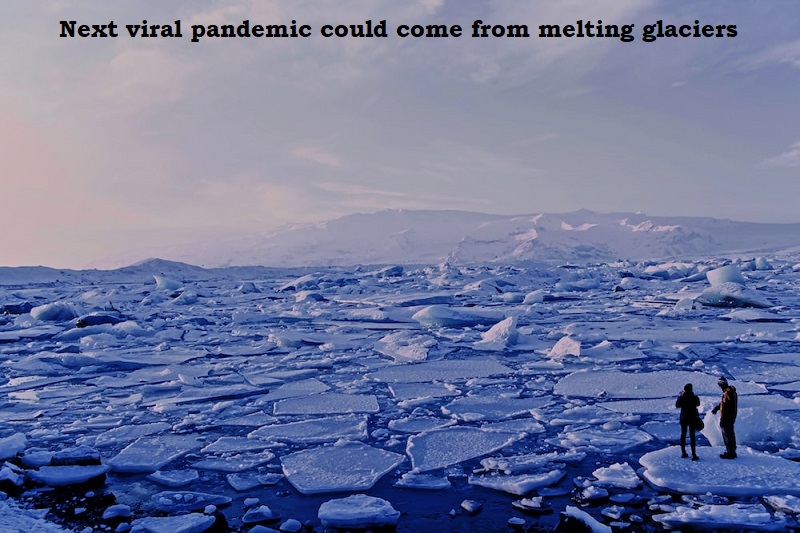
Scientists have discovered that the next pandemic may not be caused by birds or bats, but rather by something far more common – melting glaciers. This discovery comes as the world begins to fully recover from the effects of the coronavirus epidemic.
Glaciers all throughout the world are melting quickly and intensely as global climate change intensifies. Risks of viral spillover and viruses infecting new hosts have been discovered by genetic research of soil. When a virus encounters a new host, it may possibly infect it and spread persistently in this new host. This process is known as viral spillover.
In a study published in the journal Proceedings of the Royal Society B: Biological Sciences, researchers have detailed the chances of spillover as climate change rapidly affects the environment the world over.
The biggest concern for scientists remains the melting glaciers, since the removal of the permafrost (permanently frozen) weight could unload viruses and bacteria that are locked up in the glaciers. These viruses could infect wildlife which could lead to zoonosis with the virus jumping onto humans, the same as the SARS-CoV-2 that led to the Covid-19 pandemic.
‘Should climate change also shift the species’ range of potential viral vectors and reservoirs northwards, the High Arctic could become fertile ground for emerging pandemics,’ researchers said in the paper.
In order to find signals that closely like those of known viruses, the scientists collected soil and sediment samples from Lake Hazen, the biggest freshwater lake in the High Arctic. These samples were then analysed for RNA and DNA. By evaluating the congruence between the evolutionary trees of the viral and eukaryotic hosts, they calculated the spillover risk and shown that it rises with runoff from glacier melt.
It is important to note that viruses are ubiquitous and are frequently referred to as the most common replicating organisms on Earth. Viruses need to infect a host’s cell in order to replicate, hence while having extremely different genomes, they are neither independent entities or replicators.
‘The High Arctic is of special interest as it is particularly affected by climate change, warming faster than the rest of the world. Indeed, a warming climate and rapid transitions of the environment may both increase spillover risk by varying the global distribution and dynamics of viruses, as well as that of their reservoirs and vectors, as shown by arboviruses and the Hendra virus,’ the team said in the paper.
In 2021, researchers examining glaciers found 33 viruses that had been preserved for more than 15,000 years, of which 28 are brand-new viruses. The recently discovered viruses were identified in a glacier in Tibet that is melting as a result of global warming.

Post Your Comments